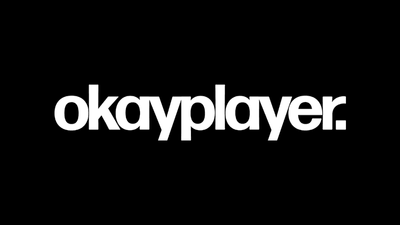SXSW Day 2: Solange's Celebration Of Blackness [Recap]
Photo of Solange Knowles at SXSW courtesy of Tony Mobley.
Our very own Elijah Watson is in Austin for SXSW. Check back each day to see what stories he has to share!
One of the most notable aspects of Solange Knowles' A Seat At The Table is the way in which it expresses anger.
"I've got a lot to be mad about," the artist sings on "Mad." But the declaration doesn't come with any noticeable anger, the rapid cadence of the delivery monotone but light, complemented by the bubbly bass and plinking piano chords.
The delivery is alluring and, arguably, that much more terrifying than if Solange voiced her anger how one often does: hollering, screaming, yelling. Yet, she manifests her anger into something that doesn't control her but she controls it, which isn't easy to do as a black person in America, let alone a black woman in America.
As I watched Solange perform at a SXSW showcase sponsored by YouTube, I saw A Seat At The Table come to life so to speak. Her show wasn't different than what you've seen when she's performed on television. But to be standing there witnessing the synchronized dance moves; the angelic coos provided by Solange's backup singers; and to simply see Solange bask in her blackness in real time, is an absolute treat.
The set began with each member of the group walking onstage, and slowly adding to the introduction of "Rise." Against a red-yellow backdrop the drummer and bassist solidified the song's groove, as Solange took the stage to lead her band and us on a journey of her artistry.
And when I say her artistry I mean just that — Solange didn't just perform tracks from her latest album but dedicated a good portion of her set to performing cuts from her True EP, as well as performed "T.O.N.Y." from her 2008 album Sol-Angel and the Hadley St. Dreams, too.
During those moments it was nice to contextualize Solange's career — how far she's come. But it was also nice to see her celebrating these past forms of herself, all of which contributed to the artist that we were witnessing onstage.
But the best part of Solange's set was surely the blackness — the many black faces that were front and center reciting Solange's performance word for word. There was one moment where she, performing "F.U.B.U.," grabbed a fan's phone from the side of the stage and sung into it. The joy on that man's face was something that stayed with me well after Solange's performance, and well after the complimentary Tito's Vodka I drank settled in.
Even in the back black people were dancing, so enraptured in Solange's performance that nothing else mattered. The jubilant, smiling faces of black women, one hand swaying underneath the dark red lights in time with the music, the other comfortably holding a cup of their preferred drink of choice, made me briefly forget that I was at a corporatized event, where some attendees didn't even try to hide the fact that they probably had no idea who Solange was.
But that didn't matter — what did matter was that Solange was giving the people there that came to see her life, rejuvenating many of us (including entitled badge holders like myself) that stood outside of the venue for quite some time to see her perform.
Solange ultimately concluded her set with an encore of "Don't Touch My Hair." This song, like many others on A Seat At The Table, but especially "Mad," finds Solange expressing anger in a controlled way. "Don't touch my hair," she sung straight faced, maintaining a stoic position throughout the verse until the chorus came around.
Many times throughout Solange's set I saw that anger manifest into many things: some vocal flutters and some pops and locks.
But here everything seemed to culminate. As the rest of her band swayed softly, Solange was a whip-my-hair-back-and-forth-tour-de-force, which was then followed by a dance move that I drunkenly referred to as the Desiigner dance.
"What you say to me? What you say to me? What you say to me?" With each repeating of the question, the band crescendoed until everything rung with a triumphant roar. Solange's job was done — she thanked the audience and walked offstage as the band ended the song.
"I'm so grateful, and so humbled that you saw a light in me," Solange said at one point during her performance. Needless to say Solange shared that light with us, and I'd like to think many of us took some of it out into the world following her show.
If you’re looking for real-time coverage of SXSW, or are “looking to build” and “f**k with the vision” while in Austin, make sure to follow Elijah on Twitter (@ElijahCWatson)!
